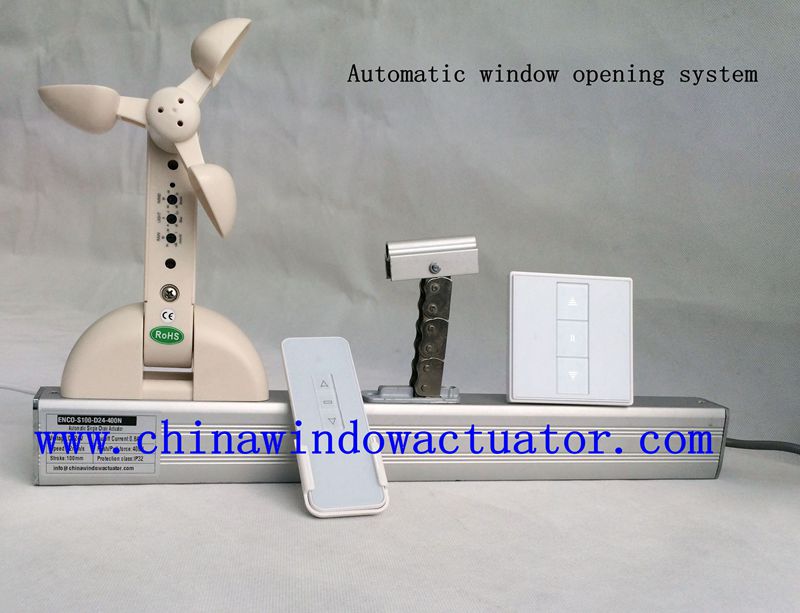One of the main reasons to automate windows is that of convenience. Not all windows are located at reachable height and may need a pole to operate, in some larger rooms and corridors many windows may need to be opened, so clearly an automated solution is preferable. On securing premises in the evening, automated windows systems can ensure all windows are closed prior to setting alarm systems.
Other benefits can include ‘night time cooling’ strategies, when premises may not be occupied, and an automated solution can operate above ground windows on a time switch basis.
The integration of automated windows into a complete building management system can ensure the most efficient use of energy.
It is crucial that the ventilation strategy is decided at the outset of the design process. By adopting either a completely natural ventilated solution or a hybrid mixed Mode solution with mechanical cooling for in only the harshest of weather conditions, can significantly reduce a buildings running costs.
How do we achieve the ‘automation’?
A window ‘actuator’ is usually an electrical device which is placed on the leading edge of a window to open and close a window to various degrees as required. These come in Three basic types, a ‘chain’ actuator, a ‘rack and pinion’actuator and a ‘linear’ actuator.
Chain actuators are the most compact and operate by pushing a one wayfolding chain out from a flush motorised housing fitted to the frame or opening light. In areas where windows are much larger, linear and rack pinion actuators, based on fixed ‘screw’ and motor principle may be used.
Whilst These Devices May Seem To Be Simple, Window Actuators Do Come In A Very Wide Range Of Sizes And Typical Offer The Following Choice Specification:
- Voltage:
Either in 24V DC or mains 230V AC ratings.
Where smoke control is required 24V DC actuators are used so that these can be operated from an independent battery back-up in case of fire and power outage in the building.
- Load:
Usually indicated in amperage and is very important to consider when specifying a complete system. Often cheaper units are less efficient and require greater loads which results in an increase of control panels to operate at the higher amerage, not to mention the increased energy requirements.
- Force:
Indicated in Newtons (9.81 N = 1Kg) and required to open and close the window safely in all weather conditions. Referring back to efficiency, the available force within the unit should be as efficient as possible to reduce the amperage required. Some larger windows may need two actuators to perform correctly.
- Stroke:
This is the distance the actuator travels creating the safe opening of the window normally indicated in millimetres.
- Speed:
Indicated in millimetres per second. This is an important consideration in smoke ventilation situations where smoke vents must fully open with a 60 second time limit.
- Size:
Units vary in size depending on their specification but housings are very important to be considered when looking at the space available within the reveal, the size of the vent and the stroke required.
- Intelligence:
Some basic actuators rely on simple switches to limit and run the actuator motor, where occupant intervention is required. Some more sophisticated devices offer resistance feedback and information on where the actuator is within its cycle by the use of incremental volt measurement.
The most important aspect of all these variables is getting the right actuator in the right place to do the job most effectively with the minimum of maintenance.
As mentioned earlier it is crucial to get a specialist involved at the very early design stages to determine the most efficient product and designs available. Leaving the choice of actuator to the lowest common denominator – cost, can have a serious detrimental impact on an installations performance and on-going maintenance requirements.


